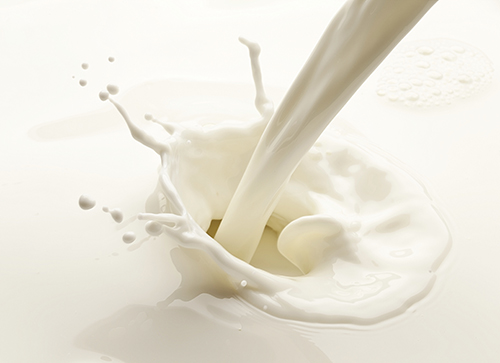
The composition of milk indicates the health of the rumen and points to the effectiveness of management and nutrition strategies. Researchers from Cornell University and the Miner Institute found this correlation by studying the percentage of milk de novo fatty acids in bulk tank milk. High milk de novo fatty acid levels have previously been correlated with higher percentages of fat and protein in milk.
Scientists visited more than 70 St. Albans Cooperative Creamery farms in northern New York and Vermont to assess management and feeding practices in order to compare them to bulk tank de novo fatty acid content.
Their findings?
Four major management and nutrition factors were consistently associated with higher de novo fatty acids in the bulk tank.
1. Farms were not overstocked. Farms with higher de novo fatty acids were five times more likely than low de novo fatty acid herds to have less than 110 percent stall stocking density.
2. Feed frequently. Higher de novo fatty acid freestall herds were five times more likely to feed twice a day. Meanwhile, their tie stall counterparts with high de novo fatty acids were 11 times more likely to feed at least five times per day compared to low de novo fatty acid herds.
3. Feed fat properly. Low de novo fatty acid herds were eight times more likely to be feeding rumen inert fat. They were also 3.5 times more likely to have more than 3.5 percent ether extract in their TMRs than high de novo fatty acid herds.
4. Meet fiber requirements. High de novo herds were 10 times more likely to feed a TMR with greater than 21 percent physically effective fiber.
Check these four items off the to-do list, and look for results at the back end higher fat and protein content in the milk and healthier rumens in the cows.
(c) Hoard's Dairyman Intel 2016
August 22, 2016








